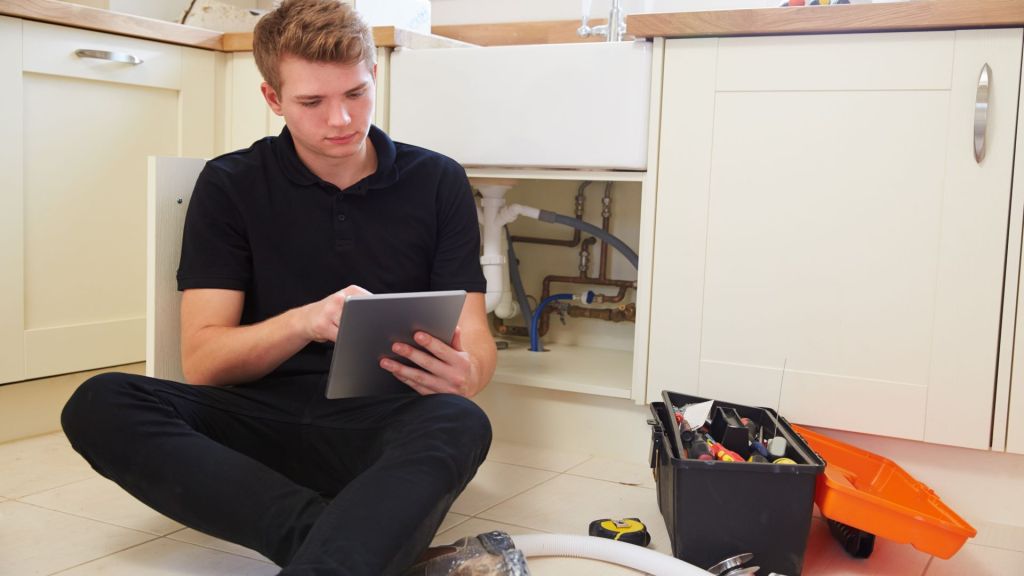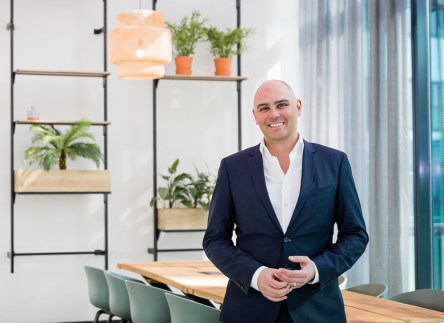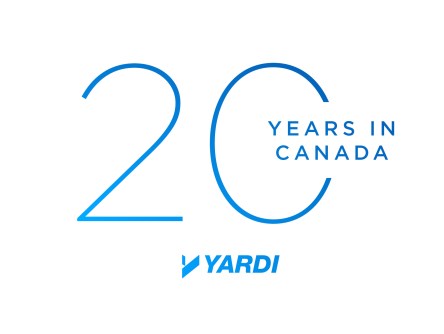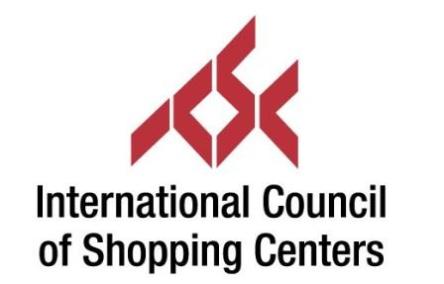If you are still conducting live training courses, you are missing out on the opportunity to save time, save money and customize the learning experience for your employees. e-Learning can work on its own or in tandem with live trainings to expedite corporate education. Why e-learning? The market size of e-learning is growing at exciting speeds. The market value surpassed $250 billion in 2020, and it is anticipated to grow more than 21% before 2027.This industry-wide shift away from classroom education reflects the perceived and calculated costs of live training courses. Yardi Aspire is a training solution that transitions clients to online learning using role-based plans. The customizable program offers savings in four key areas: Personnel This category includes the cost of all people involved in producing the training such as content designers, IT professionals, reviewers and approvers. Aspire software significantly reduces administrative costs through the introduction of technology. The software also allows users to eliminate travel and lodging expenses.Technology The cost of the e-learning solutions, computers, web conference system, and any other technology involved in conducting the training are included in this category. These costs are the primary reason many companies choose to invest in e-learning.Content This category includes the cost of content production and the cost of acquiring content from a vendor. By recording an instructor once and delivering the recorded course online, organizations can maximize the use of content and decrease costs associated with instructors.Administrative Significant time is spent recording training activities, setting up training opportunities, and communicating with trainees and instructors before and after the event. Decreasing administrative costs offers benefits throughout the organization. Cost savings, line-by-line What do these savings look like in a real world, real estate example? Let’s take a sample client who is in the middle...
Maintenance Made Mobile
10 benefits for all
Why does your maintenance team need to be mobile ready? Mobile maintenance software gives techs the tools that they need to work more efficiently, act promptly and easily document their progress. But the benefits don’t stop there. Read on to learn how your staff can take maintenance to the next level with a mobile-accessible solution. The paper trail is holding back your maintenance team Paper maintenance requests, paper work orders, paper task logs, paper order forms and paper approvals: paper is a problem. Paper can only be in one place at one time, meaning that you need copies (read: redundancy and waste) to keep multiple team members on track. If information is updated on one sheet, you’ve got to update all other sheets, redistribute and store as needed. If you have not already, it’s beyond time to transition into a paperless maintenance system. Online property maintenance software such as Yardi Maintenance IQ makes it easy for leasing staff and maintenance team members to stay on track and up-to-date with tasks. First, renters submit their requests online. It is then easily dispatched to maintenance leadership and their technicians. Technicians can progress through work orders from the field without multiple trips to the office. They can issue status updates, include photos and notes, and request supplies from a single mobile device. All information is automatically updated in Yardi Voyager. In addition to improving efficiency, mobile tools help improve retention by providing great service to residents. Today’s residents are accustomed to doing so much online, from ordering food to paying bills. Residents seek an easy way to submit requests, get quick responses and frequent updates—all of which you can deliver with an advanced maintenance system. The benefits of Maintenance IQ do not end there. Here are the top ten benefits for everyone from on-site staff to stakeholders: Save time. Staff spend more time doing their jobs and less time filling out paperwork, making calls, placing orders and traipsing between units and the office.Reduce paper. No more paper forms or printing, thanks to online work orders and digital signatures. This cuts costs and also meets green initiatives.Prioritize better. Know instantly what the high priorities are every minute of every day, with access to photos from the site and work order entry notes.Get real-time updates. Supervisors, staff and techs can view current updates on a centralized online calendar.Drive less. No need to drive to the office to pick up or drop off maintenance paperwork, and no unnecessary site trips when requests are rescheduled or cancelled. Online directions with mapping, along with resident contact info, help ensure no time is wasted.Track everything... Receive up-to-the-minute status reports and audit trails on assigned and unassigned work orders and employee whereabouts, including emergency responses, and follow them to completion.…that includes tracking costs. Track turn costs and days on the unit turn dashboard and see upcoming units.Get accurate reports. Time-sensitive reporting provides business intelligence and better oversight.Improve productivity. When you’re mobile, you’re not tethered to a desk. Get out it in the field and get more done with your mobile device while interacting with your staff, residents and tenants.Save money. Failing to respond to maintenance requests in a timely manner can result in much more expensive repairs later as well as an increase in costly move-outs. Now you know ten of the most compelling reasons to take your maintenance mobile — and why using a solution that works seamlessly with your property management and accounting system will yield the multiple benefits. Read more about how Maintenance IQ can help expedite rental turns and elevate rental...
Multifamily CRM
What to Look For in 2022
Are you setting fresh, ambitious goals for your multifamily business? Quality customer relationship management (CRM) software can help you reach them. We’ve got top insights in what to look for when choosing a multifamily CRM solution. What is multifamily CRM? You’ve likely heard of CRM and even dabbled in some of its features. Such software is increasingly critical for the optimal efficiency and functionality of your multifamily business. CRM gives you a 360-degree view of your relationship with each contact, from prospect to former resident. It offers a centralized location for managing client info, tracking correspondences and compiling data on client behaviors. With such insights, you can market for more conversions, sign more leases, improve retention and revenue. A good CRM tool will also help office workloads feel lighter, resulting in more energized and focused staff with less turnover. If that sounds good to you, read on! What to look for in multifamily CRM… There are lots of CRM options on the market. To select the one that is appropriate for your business, consider the following. Scalability Different tools at different price points will offer options that are suitable for your business. Select an option that meets your current needs and can grow with you in coming years. Automation We will spend a lot of time here. Your staff will need automation to streamline workflows and reduce manual, redundant and often time-consuming tasks. Consider follow-ups: quick responses (under five minutes) are 21 times more likely to lead to a sale. This is because 88% of consumers expect a business to respond to their inquiry within 60 minutes. More than 30% expect a response in 15 minutes or fewer, per the 2020 NMHC/Kingsley Apartment Resident Preferences Report. With automated text messaging and emails, your CRM...
Canadian RE Insight
Simplicity Aids Tech Acceptance
We continue our discussion of how to create a supportive technology culture in Canadian real estate organizations with industry leaders Sarah Segal, director of real estate for Informa Connect, and Michael Brooks, CEO of REALPAC. Let’s start with Brooks, who itemizes what he considers the most necessary elements for promoting a tech-friendly culture: “I would say attitude, process and leadership,” he says. “Attitude means being receptive to continuous improvement. Process encompasses the search and selection of the best tech fit for the organization. And leadership refers to affirmation from top management that progress and technology adoption are complementary and self-reinforcing virtues.” And what’s the best way to encourage receptiveness to new technology? For Segal, it’s fairly straightforward: “Don’t make it scary. Keep it simple and focused,” she says, because major changes to working processes take time and resources and have the potential to overwhelm. Once the team gets comfortable and realizes how the products benefit their work and the organization as a whole, “you can grow the offerings and technology stack.” “Technology integration is a journey, not a single product,” Segal continues. “Incremental growth leads to higher returns and better adoption as opposed to big, sudden shifts in how a team works.” It’s a good idea to “anticipate concerns and opportunities that may arise and have solutions ready for them. This will lead to increased user acceptance and satisfaction.” One of the biggest uncertainties surrounding real estate and the rest of the economy over the past year is, of course, COVID-19. Did the pandemic have an impact on tech adoption? Segal and Brooks agree that the pandemic gave rise to a paradigm shift for many commercial tech companies. In Informa Connect’s case, “what had been a 5-10 year plan became a 5-10 month plan,”...
Tech Harmony
PM Springfest, Canada
We’ve learned that most every company is a tech company: in the past year, companies that prioritized adaptability and tech innovation managed to thrive in the most unprecedented circumstances. At PM Springfest, two real estate industry experts shared their best practices for tech selection, implementation and creating efficient processes that scale. Their analysis offers insights and inspiration to prepare Canadian property managers for a harmonious future with technology. PM Springfest 2021 PM Springfest is a two-day online educational conference for decision makers and influencers of the property management industry. The event gave participants the opportunity to connect, network, learn and share insights on the industry’s most important topics including sustainability, legal and regulatory issues, resiliency and technology. Panelist Sandeep Manak, CFO, Wesgroup Properties, Brian Turpin, CIO, Greenwin and moderator Sam Amin, marketing manager, Yardi Canada led the webinar, “Hello New World: Are You Ready for the Future of Real Estate Tech?” The panel explored how tech facilitates business continuity, strategies for successful adoption and how they leverage data to thrive. Tech is essential for modern, successful business continuity The pandemic served as a catalyst for technology adoption throughout real estate verticals. Manual processes, paper-based filing systems, and face-to-face interactions came to an abrupt halt. Technology empowered companies to press forward and thrive in remote environments. Turpin says, “At Greenwin, we always had this digital mindset of being cloud-first. Our overall strategy has been focused on mobility, digital payments, online leasing, and virtual tours.” As a result, Greenwin was able to shift to remote work environments within a few days. The organization also accelerated disaster response protocols that were already in place. “Something that we specifically did around the pandemic was the deferred payments,” says Turpin. “A vendor like Yardi quickly stepped up and pivoted...
Outstanding service
Portals for real estate tenants and residents
These days it might be easy, perhaps even understandable, for those in commercial real estate to downplay the relationship of tenant interaction to asset performance. After all, the COVID-19 pandemic has largely evicted workers from their offices while retail continues to endure e-commerce’s expanding presence. But property owners shouldn’t lose sight of how important ongoing communication between owners and their tenants is for attracting prospects, retaining tenants and operating efficiently. Erin Wicomb of San Diego real estate investor Mavrik Investing has noted that “customer retention is often an underestimated factor in real estate success and not given nearly enough attention. Plenty of effort is spent finding and marketing to new tenants, but investors and landlords often neglect to take care of existing customers and make them happy.” Focusing on the residential market, the U.S. National Multifamily Housing Council noted in a 2018 report titled Disruption: How Demographics, Psychographics and Technology Are Bringing Multifamily to the Brink of a Design Revolution that “tomorrow’s renters’ needs and wants are shaping up to be so very different in any number of ways that the industry must begin thinking about how to adapt or risk facing a disconnect with their future customers.” In a similar vein, a commercial property leasing guide published by Colliers International declared that “the number one reason that an owner’s relationship with his or tenant falls apart is lack of communication – and this is often the responsibility of the property manager,” adding, “You can have the best customer service on the planet, but when property management breaks down through lack of foresight or poor communication, that one action can strike a fatal blow against all the goodwill you had built up.” Residential tech demonstrates success How do residential property owners avoid that fatal blow and take care of their residents, maintain communication and build goodwill? Many have embraced portals as the answer. They are a valuable tool for connecting residential community members to the services they might need any time of day or night. Seamless access to contact, lead, lease, resident and property data lets staff focus their attention on higher-value operations. Advanced property management technology platforms host portals as part of an end-to-end system that performs all prospect and resident services in the rental lifecycle, from initial contact to move-in, lease renewal and move-out, as well as timely communication. New advantages for commercial real estate Commercial real estate operators might want to consider emulating their residential counterparts by implementing portals and apps that deliver tenant services much more efficiently than is possible with telephones and emails. Property managers, for example, can easily dispatch announcements, emergency plans and other vital information through a portal. Tenants, for their part, can record maintenance requests and attach audio and photo documentation. Although millennials seeking cutting-edge amenities in their living spaces are the most visible advocates of property technology innovations, commercial real estate is undergoing its own generational shift. The younger workers among the sector’s cohort similarly expect the convenience of online and mobile self-services such as document access, electronic payments, maintenance requests, retail sales data entry and concierge services. Ideally, portals are built into a property management and accounting platform that centralizes financials, operations, leasing, maintenance management and other operations in a cloud-hosted database. Relieved of manual tasks such as the recording of tasks, property owners can concentrate on closing leases, maximizing rental income, increasing conversions and renewals, and ultimately enhancing their assets’ value. Some property management platforms leverage artificial intelligence, machine learning and chatbots to combine historical unit-level performance data with market outlooks. The resulting portfolio-wide data and prescriptive recommendations help managers make informed decisions that cut costs and elevate asset performance. Portal technology offers a human touch that contributes measurably to tenant satisfaction, a key element of retention and a property’s reputation in the marketplace. As Mavrik Investing’s Wicomb advises, “From the start, develop and provide channels of open...
Data Drives Success
Yardi EU Perspective
Real estate asset management firms are facing extraordinary challenges in the aftermath of the COVID-19 outbreak. Some may emerge from the crisis relatively unscathed. Others might not be so fortunate. Social distancing requirements and work-from-home strategies, prompted by COVID-19, have rapidly amplified the importance of operational and financial data, its accessibility and team connectivity. What matters almost more than the data itself, however, is the means of obtaining it efficiently and using it effectively to benefit clients, investors and other stakeholders. That’s not easily done without the right technology. In the world of real estate asset management, data comprises information that reveals a portfolio’s health, such as revenues, debt, risk, occupancy and sales, along with property-level operations such as energy consumption and accounts receivable. Two distinct groups need this data: operations groups tasked with effective management of the portfolio, property and tenants; and those who focus primarily on investors along with the organisation’s tactical and strategic issues. Some systems compile data from multiple disparate systems, making usable data a moving target. This approach – which prevailed in most property management industry vertical markets until the last couple of decades — is complicated, cumbersome and prone to error. For asset and operations managers to remain nimble, act proactively, anticipate and react decisively, they need a way to stabilise and gain instant access to it. That’s why connectivity is the key value proposition in asset management and the reason that sophisticated yet user-friendly asset management software applications that collect, process and apply such data across the asset management lifecycle are increasingly relevant. All user groups benefit when the data their business depends on is readily available. Fortunately for them, today’s asset management technology platforms assimilate all asset management information at the property and portfolio levels and...
New Tech Era
Realcomm Webinar
For decades, commercial property managers regarded information technology as a support function, one that was almost always isolated from the strategic direction of the business. Today, with virtually all property stakeholders expecting greater operational control and transparency, relegating IT to a peripheral or firefighting role is no longer an option. The consensus among Yardi’s Dhar Sawh and other experts who participated in a recent Realcomm-hosted webinar holds that IT, as a company’s technology implementation gatekeeper, should command status as a full partner and value generator. Sawh defined the purpose of a technology strategy as satisfying owner and investor expectations for favorable revenue, cost and risk mitigation outcomes. Performing the business operations necessary to achieve them requires visibility into revenue, occupancy and other indicators that spans the organization. That, in turn, requires connected solutions that unify people and resources, from vendors and employees all the way up to investors, in a common vision. He also pointed out that extracting cost and revenue benefits from current operations, rather than actively pursuing new yields, is the most reliable generator of investor returns late in an economic expansion cycle such as the current one. IT drives those results with technology that’s scaled across the organization and empowers stakeholders with automation and self-service capabilities like online invoice processing, payments and work orders. Another example of technology occupying a place at the core of a business is active sensors that monitor a space and preheat or precool the area before it’s occupied. This allows building owners to avoid charges for utility usage at peak times. “This is an example of integrating technology for the benefit of business objectives,” Sawh said. Once invested as a full partner in the business, IT can create positive experiences for owners and occupants by elevating...
Get More from Yardi
Resources for Clients + Prospects
Did you know that Yardi offers products and services for 18 industries? We are continually in development of quality software that maximizes technology and benefits your business. There are several ways to learn more about Yardi’s solutions for your real estate company. Online, All the Time The Resources page is available 24/7. Whether you’re looking for quick bites of info or in-depth analysis, we’ve got you covered. eBooks – These in-depth resources explain key benefits of our software solutions in reader-friendly formats. They’re rich with informative graphics and helpful data. Client Success Stories– Explore how clients in your industry use Yardi to revolutionize their businesses. Client success stories address tools for improved efficiency, going paperless, and other ways to improve the bottom line. Quick Videos– Got 3 minutes or fewer? Client interviews and “explainer” videos are an easy way to get your real estate questions answered and learn about Yardi software and services. White Papers– Dive into case studies that give you a detailed look at how fellow industry professionals used technology to advance their businesses. Product Brochures– Maybe you’ve heard the buzz about a new product and now you’re ready to learn more. Our brochures offer a high-level overview of product information. You will also find helpful contact information for additional details. Upon visiting the Resources page, you will encounter our latest and most popular uploads. Looking for something specific? Simply use the Filter to drill down into materials unique to your industry. You can also search by Solution Type. Live, Customized Experiences At Yardi, we value the opportunity to meet you face-to-face. These priceless encounters are a great way to dive into the nuances of the industry, your business needs, and how Yardi software bridges the gaps. The Events page delivers current...
Real Estate Questions Answered
Yardi content series delivers solutions
Yardi has launched a dynamic new content series and website, Real Estate Questions Answered, where real estate professionals can find answers to a number of industry challenges. “Our clients are using technology to solve problems and create new opportunities every day. We’re excited to share their knowledge, expertise and experience with the industry at large,” said Esther Bonardi, vice president of marketing at Yardi. “We began by interviewing several top industry professionals to gather the insights shared on RealEstateQuestionsAnswered.com and we will continue to feature more client experts and deliver more answers.” Real Estate Questions Answered showcases content focused on a variety of asset classes, including multifamily, affordable housing, commercial, investment management and senior living. The content resource library will continue to expand, with new clients and market segments featured and new videos, success stories, ebooks, white papers and more to be added regularly. Here is a small sample of the questions asked and answered on the new site: How do you optimize asset performance? Answer: Diana Norbury, SVP of Multifamily Operations, Pillar Properties. How do you increase investor confidence? Answer: Joe Anfuso, CFO, MG Properties Group. How do you increase lead conversion? Answer: Arun Das, Head of Marketing and Technology, Pangea Properties. How do you close deals faster? Answer: Richard Hickson, EVP, Operations, Cousins Properties. These insights are accessible at any time. Check back regularly to see what’s new on the Real Estate Questions Answered...
Welcome to Mobile 5G
AT&T Selects 12 Cities
We can all use faster internet! Make daily operations more efficient for your staff with the latest advance in US mobile technology. Beginning spring 2019, AT&T will offer a faster internet speed for mobile devices in 12 cities. 5G, Revamped If you feel like you already read about this early in 2018, you’re sort of right. AT&T introduced a version of 5G earlier in the year. It was 5G TF, which came with a ton of limitations. T-Mobile CEO John Legere was quick to point out those shortcomings on Twitter, “I cannot begin to explain how important 5G is going to be for this country, so I have to say congrats to Verizon on delivering its 5G* Home Service today. It doesn’t use global industry standards or cover whole blocks and will never scale… but hey, it is first, right?!” AT&T’s limited release was offered to residences via the Netgear Nighthawk 5G Mobile Hotspot in more than 20 cities. Now, the Dallas-based company ups the ante with mobile access on 5G NR, the more commonly accepted application that meets industry standards. The new 5G offers faster speeds and very low latency. That means you will be able to enjoy faster responsiveness from Yardi Voyager property management software: quickly upload receipts, forms, and other files to the cloud for easy access and safe storage. Your team can reach more prospects by live streaming property tours and events on Facebook, Instagram, and Snapchat. With delivery and rideshare services skyrocketing, you’ll have an advantage with 5G. Your communities can offer safer access to driverless vehicles. The applications are endless. Mobility, Faster Without mobile devices that can keep up, mobile 5G would be unexciting. Fortunately, the first 5G-compatible handsets should be available in early 2019. Samsung has promised...
20 Years of Tech
Yardi Canada's Journey
Celebrating 20 years, Yardi Canada has come a long way. As a leading innovator that delivers technology solutions to move the Canadian real estate industry forward, Yardi Canada focuses on helping clients thrive through every change. We caught up with a few of Yardi Canada’s leaders to learn more about the company’s evolution. From DOS to Windows to Internet based web apps to mobile apps and now on to artificial intelligence, Yardi has always been there with a solution for its clients. Here are a few technological highlights from the past two decades. A Unique Market Mobility and the cloud might reign now, but it all began with DOS. Introducing real estate companies to new technologies to improve business operations has never been an easy task. As Canadians, we tend to be a little more conservative when it comes to change. However, Peter Altobelli, general manager and vice president of sales for Yardi Canada, found it was easy to bring Yardi’s three DOS products to market: Yardi Basic, Yardi Deluxe and Yardi Premier. “DOS was a great product to implement since it was reliable, simple and easy to use. It was a technology that property managers understood. Plus, it had all these great shortcuts, because we didn’t have a mouse back then,” recalls Altobelli. Altobelli set up Yardi’s first office in Canada in 1998, which started with four people and now has grown to a staff of over 200. Today’s multitasking generation, accustomed to multiple windows and screens, would feel restricted with a DOS platform. But back then, users could accomplish single functions at a time quickly and efficiently. It was exactly what the industry needed as a catalyst towards more technology and innovation. Moving to the Internet At every innovative milestone, Yardi Canada...
Proptech Innovations
Secrets for Success
Ed. Note: Neal Gemassmer (pictured, right) is vice president of international for Yardi. This piece on global real estate technology adoption was originally authored for Property Week. It is relatively easy to raise a few hundred thousand pounds and start a company, so I think the number of new proptech start-ups will continue to grow exponentially. It may have been a relatively late adopter where technology is concerned, but the real estate industry is now embracing it. Thanks to the advent of simpler programming languages, the accessibility of cloud storage and the weight of investment capital aimed at the sector, setting up a proptech company has never been easier. On top of that, the now widespread use of apps offers a simple way of getting your technology into customers’ hands via the App Store or Google Play. With this in mind, it is no wonder that new companies are springing up in the sector on an almost daily basis, each of them aiming to solve a particular problem or simplify a complicated process. But as the property industry’s use of – and understanding of – technology becomes more sophisticated, it is technologies that make a fundamental difference to the way businesses work and create real value for their customers that will succeed. Although it has only been encapsulated in a neat buzzword in the last couple of years, proptech has been around in one form or another for far longer. Yardi Systems was founded in 1984 as a small software start-up in the property management sphere and has grown to become one of the largest companies in the sector, learning a lot along the way. In the US residential market, where Yardi has its roots, customers have been able for many years now to identify a...
Innovation Rules
Insight from ICSC Whistler
Technological shifts are revolutionizing business. Few other industries embody this reality more completely than the office and retail sectors, according to Heather Brady, national director of sales for Yardi Canada. Brady gave a presentation about how industrial, office and retail companies can use innovative technologies to improve decision-making at the recent International Council of Shopping Centers (ICSC) conference in Whistler, British Columbia. Brady’s presentation, “Embracing the Future through Technology and Business Transformation,” focused on the value innovative technologies can deliver for real estate companies seeking to improve decision-making and enhance competitiveness. Examples include automated solutions for deal making, customer relationship management, energy consumption controls and business intelligence. Brady noted that growth in shared workspaces and flexible work schedules epitomizes office innovation today. Full-time and part-time freelancers, independent contractors and on-demand workers are expected to account for up to 45% of Canada’s workforce by 2020. “This trend will increase demand for shared workspaces, which in turn will drive an increase in the number of tenants and the length of leases. The technology needed to manage shared workspaces will in turn become increasingly important,” she said. Meanwhile, e-commerce has penetrated 65% of Canada’s retail economy, led by books, movies, music, games, clothing and consumer electronics. In 2013, e-commerce was responsible for 4.5% of total Canadian retail sales; the forecast for this year is 8%. Around the world, the longstanding model of a mall anchored by a big-box retailer is no longer sufficient to draw foot traffic. “Bricks and mortar aren’t going away, but visiting a mall is starting to encompass more than merely shopping. Retail is transforming into an integrated, multichannel customer experience, including a strong digital presence and warehouses to support demand,” Brady said. “Also retailers are making their space “entertainment centers” featuring restaurants, clubs,...
Merging Traffic
Real Estate Asset Performance
In September 2016, real estate became the 11th Global Industry Classification Standard sector. Morgan Stanley Capital International Inc. and S&P Dow Jones Indices, which maintain the standardized classification system for equities, described the action as reflecting the “growing importance of real estate in the world’s equity markets” and “the position of real estate as a distinct asset class and a foundational building block of a modern portfolio, rather than an alternative.” The GICS classification means real estate asset performance is no longer blended into a larger financial picture but stands fully accountable on its own merits. This has prompted many companies to capitalize on real estate’s status as an increasingly viable asset class. For example, Cousins Properties Inc. completed the spinoff of Parkway Inc. into an independent REIT in October 2016. In March 2017, shopping center owner, operator and developer Regency Centers Corporation merged with Equity One Inc. to form a $16 billion company. Government Properties Income Trust acquired First Potomac Realty Trust for $1.4 billion later that year. Alex Stanton, Yardi’s industry principal for commercial, offers insight into best practices for participating in the growing mergers and acquisitions trend. The following are his thoughts on how to prepare: The increasingly common exchanges of real estate following the GICS designation aren’t the exclusive province of the big players; it’s happening with medium and small real estate companies as well, including enterprises that are family owned and operated. Mergers and acquisitions hold high potential to benefit shareholders, staff and customers of the newly created entity—but only if the organizations involved put the right strategy and assets in place. Here are some ways to do that. Put People First A company may be privately owned and dreaming of being a REIT, or planning to open funds...
Role-Based Apps
Forecasting the Future
At the recent Yardi Executive Briefing in Southern California, Tamara Berndt provided an illuminative glimpse into the future of real estate technology. As a Senior Director for Yardi’s multifamily consulting practices team, Berndt is ideally positioned to forecast industry trends. Working with both multifamily and commercial clients provides her with a holistic vision of where real estate technology is headed. In over 23 years at Yardi, she has been involved in countless development and implementation projects for clients of all sizes. So what does the future Yardi user experience look like? Look no further than your smartphone. “Everybody’s mobile. You do everything from your phone. In today’s world, everything is focused on apps,” Berndt explained. “Imagine that no one is touching the core Voyager application at all. That’s the back office ERP solution. The following example takes place entirely on apps.” Here is the use case she presented: A multifamily resident, or a commercial tenant, notices a leaky toilet in their unit. Rather than calling a hotline or going to a desktop, they use the RENTCafé mobile app on their phone to submit a service request. Their message includes a photo of what is happening and an audio file describing the problem, all uploaded in the app. That report becomes a work order, which populates in the Yardi Maintenance Manager Mobile app used by the property’s maintenance supervisor. Even if they are out of the office, a push notification that a new work order has arrives notifies the manager to assign an available technician to look into the issue right away. The technician on duty receives a similar push notification alerting them to the new assignment. Their role based-app is Yardi Maintenance Mobile, and it allows the tech to have eyes on the problem before they even visit the unit, thanks to the photograph the resident provided. Needed parts or supplies can be ordered from a vendor within the app before they get to the job, saving time and creating a faster path to resolution. Once at the unit and with the repair completed, the technician can close out the work order with a photo of the repair and report of the work entailed to resolve the issue. It is all submitted within the app and documented in Voyager for expense reconciliation and reporting. Meanwhile, the purchase order created for parts used in the repair arrives in the payables app used by the regional manager in charge of approving expenses. They authorize the purchase from their phone while on the road visiting another property. A treasury app confirms that funds are available for the transaction, and the Yardi Bill Pay service remits a check or EFT payment to the vendor. The resident, who has gone on with their day, receives a final message that the issue is resolved and a clean bathroom will be waiting for them when they return home. “In that entire process, nobody has logged into the Voyager application,” Berndt observed. “And as those familiar with our product suite might have noticed, most of the applications described already exist today.” Known for constantly striving to improve its product suite to benefit clients, Yardi developers are currently undergoing an analysis of the entire Voyager framework to identify additional app opportunities, Berndt revealed. So when will this all-app environment become a daily reality? It is likely to be sooner than you think. “The revolution in mobility, and having access to cloud applications and data wherever you are, 24-7, is a big deal,” said Noel Clark, Vice President of IT for Yardi client Kennedy Wilson, who talked about innovation and mobility at YASC. “Not that long ago, it was an ordeal to just get online. Now many people just work on their mobile device. This is the first year that I came to the conference and did not bring a laptop. I can do pretty much everything I need...
















